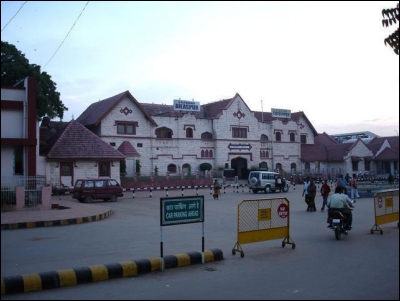The Lad Khan Temple in Aihole stands as a profound testament to the architectural brilliance of the Chalukya dynasty, embodying centuries of artistic and cultural evolution. Nestled within the expansive Aihole temple complex, this remarkable structure represents more than just a place of worship—it is a living narrative of Karnataka's rich historical tapestry.
Originally dedicated to Lord Vishnu before transitioning to a Shaivite temple, the site reflects the dynamic spiritual landscape of medieval Karnataka. The temple's unique architectural design, characterized by its cave-like appearance and massive stone pillars, demonstrates the Chalukyan artisans' exceptional skill in transforming wooden architectural styles into enduring stone monuments.
The temple's name carries intrigue, with conflicting narratives surrounding its origin. Some accounts attribute the name to a prince named Lad Khan who resided within its walls, while others suggest a Bijapuri general who desecrated the sacred space. Regardless of its nomenclature, the temple remains a crucial artifact of the Chalukyan cultural renaissance.
Architecturally, the Lad Khan Temple exemplifies the Panchayatana style, featuring a distinctive layout with a rectangular front structure and a square rear section. Its interior houses a Garba Griha containing a Shiva Linga, surrounded by intricate carvings depicting Hindu mythological scenes. The absence of a traditional Shikhara further distinguishes its architectural identity, highlighting the innovative spirit of Chalukyan designers.
The temple's restoration by the Archaeological Survey of India in the 20th century was pivotal in preserving this historical treasure. Careful reconstruction efforts not only reinstated the physical structure but also rekindled interest in the rich cultural heritage of Aihole and its surrounding region.
Beyond its architectural significance, the Lad Khan Temple represents a microcosm of the broader Chalukyan cultural landscape. The kings of this dynasty were renowned for their patronage of art, architecture, and religious diversity, with a profound understanding of both Hinduism and Jainism that permeated their architectural expressions.
The intricate sculptures adorning the temple's pillars and walls serve as silent storytellers, capturing mythological narratives and providing insights into the social and spiritual contexts of their time. Each carved detail represents a fragment of historical memory, meticulously preserved through generations.
Today, the Lad Khan Temple stands as more than a historical monument—it is a bridge connecting contemporary visitors with the rich cultural legacy of the Chalukya dynasty. Its continued preservation ensures that future generations can witness and appreciate the extraordinary artistic and spiritual achievements of medieval Karnataka.



